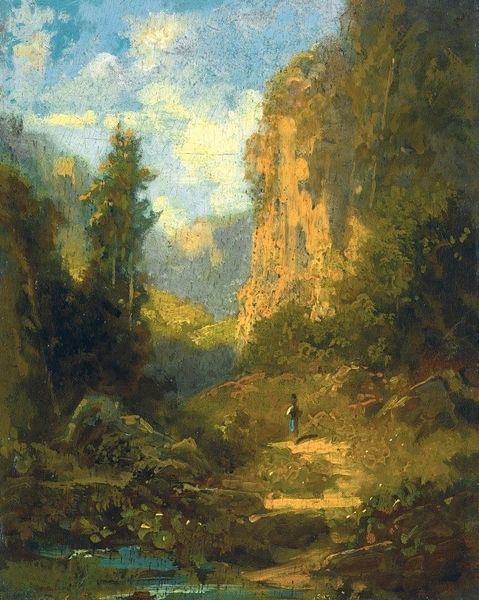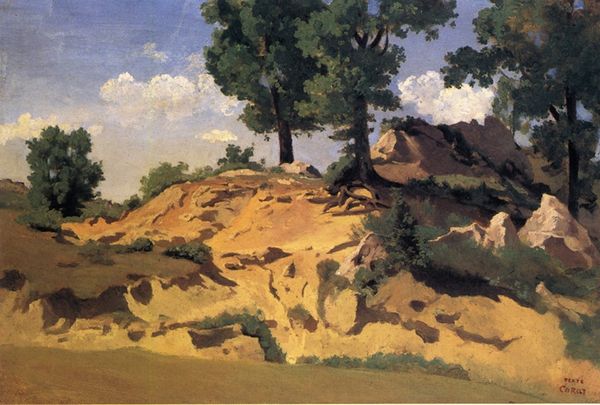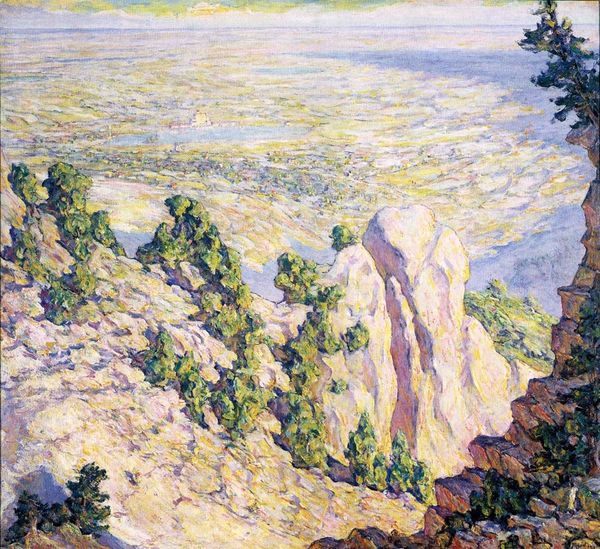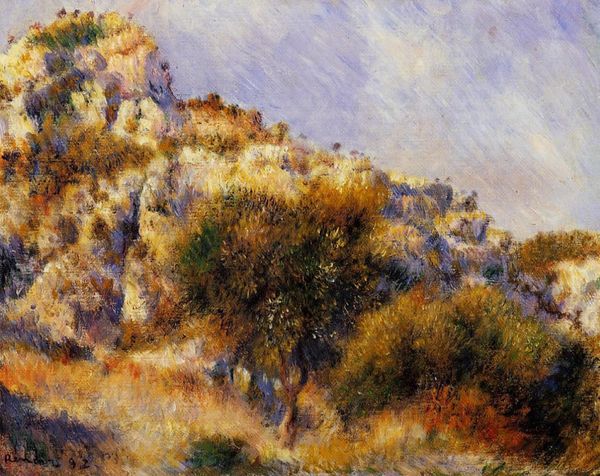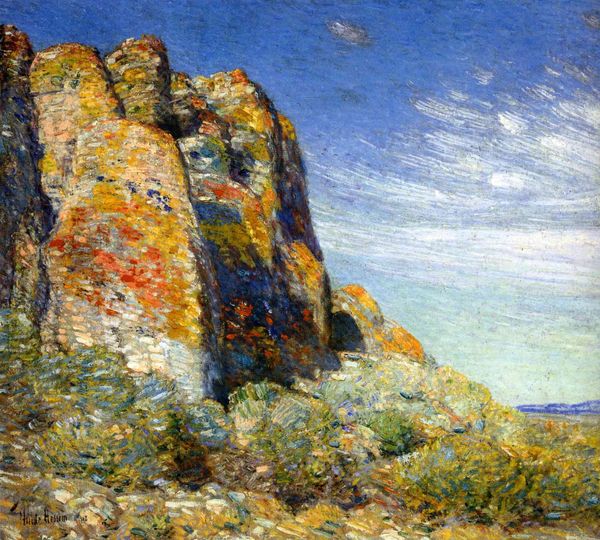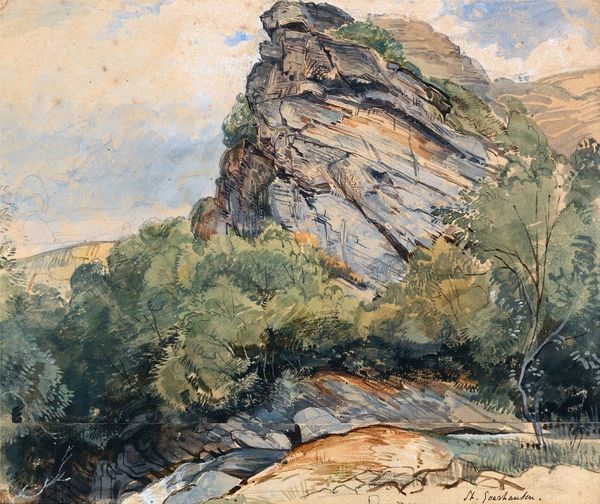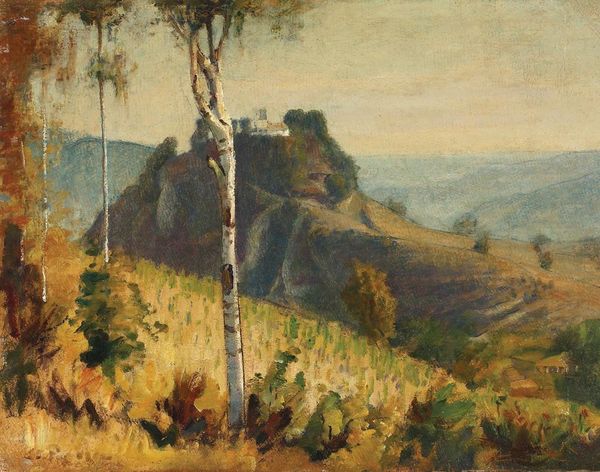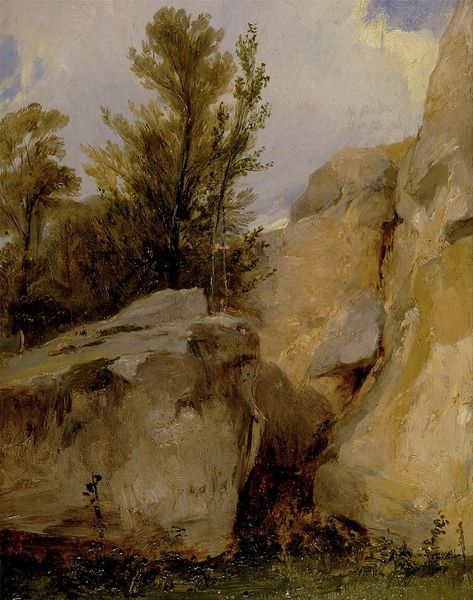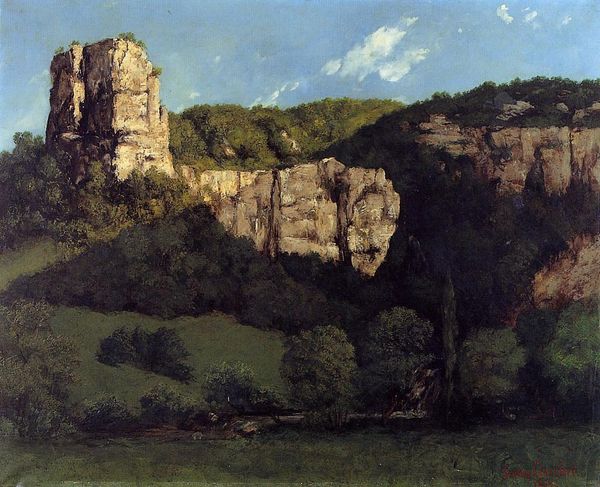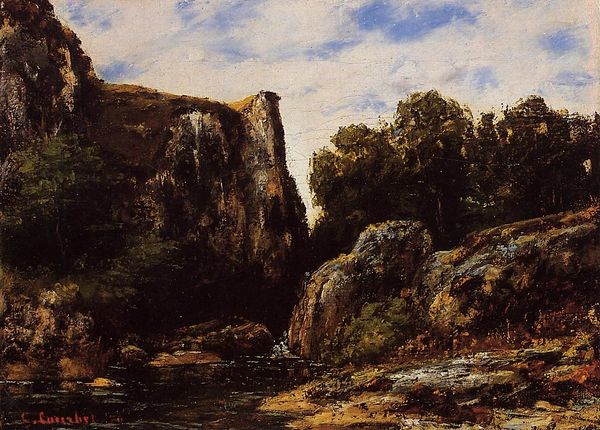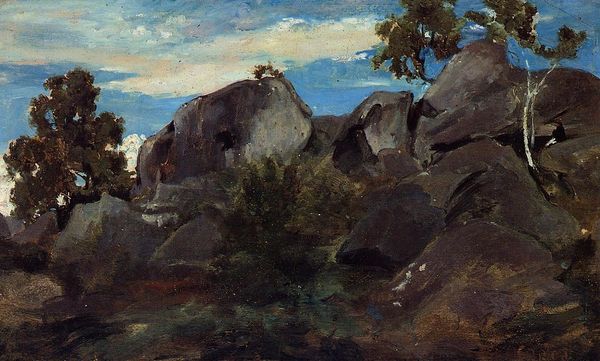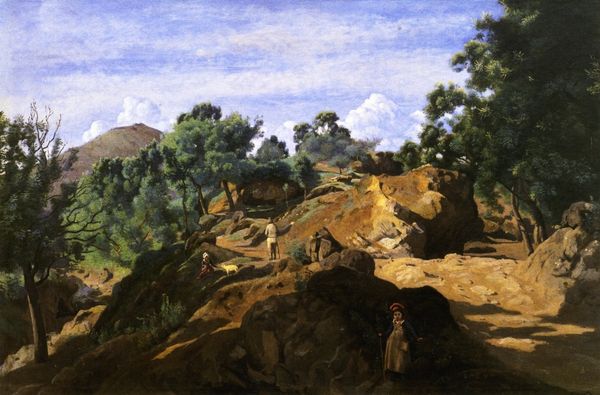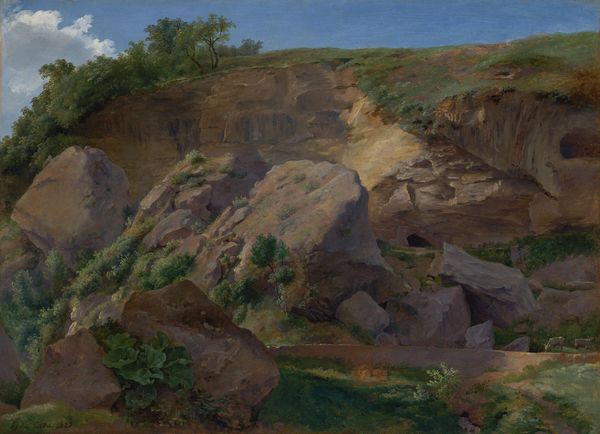
Rocks at Civita Castellana 1827
0:00
0:00
jeanbaptistecamillecorot
Bavarian State Painting Collections, Munich, Germany
#
tree
#
sky
#
cliff
#
abstract painting
#
charcoal drawing
#
impressionist landscape
#
possibly oil pastel
#
oil painting
#
rock
#
acrylic on canvas
#
underpainting
#
mountain
#
painting painterly
#
mixed medium
#
watercolor
Dimensions: 26.6 x 21.2 cm
Copyright: Public domain
Curator: Standing before us is Camille Corot’s "Rocks at Civita Castellana," painted in 1827. It’s currently held in the Bavarian State Painting Collections in Munich. Editor: My immediate impression is one of silent grandeur, really! The rock formation dominates, almost like a natural fortress, but the palette softens that initial starkness. It feels...meditative. Curator: Absolutely. The rocks themselves hold symbolic weight. They represent enduring strength, a permanence that contrasts with the fleeting nature of human existence. Rocks and mountains have been used for centuries to depict challenges to overcome but also as the pillars of civilization. Editor: I agree that those connotations of endurance are interesting, but I also see the shadows and textures giving voice to the marginalized. It makes me consider how the geological record itself reflects power structures, who gets to write the narrative of history into stone, or even control resource extraction. Curator: That’s a fascinating intersection! The way Corot renders the trees clinging to the rocks is poignant too; it reminds us how life persists even in seemingly inhospitable environments, a motif of resilience. Editor: Right! And the way light touches the peaks only reinforces that feeling of perseverance, almost defying gravity or circumstance. Considering the timeframe, early 19th century, this was also a period of intense geological discovery that further challenged previous ways of understanding both divinity and temporality. It really asks us what we're holding onto. Curator: Precisely, which gives another dimension to how artists perceived and translated landscape, and the symbolism tied into those elements. The landscape mirrors interiority, but more profoundly after the new scientific developments of the 1800s. Editor: It certainly gives one plenty to contemplate. Curator: Indeed! Hopefully it provided a small aperture to better appreciate its intricate complexities.
Comments
No comments
Be the first to comment and join the conversation on the ultimate creative platform.
